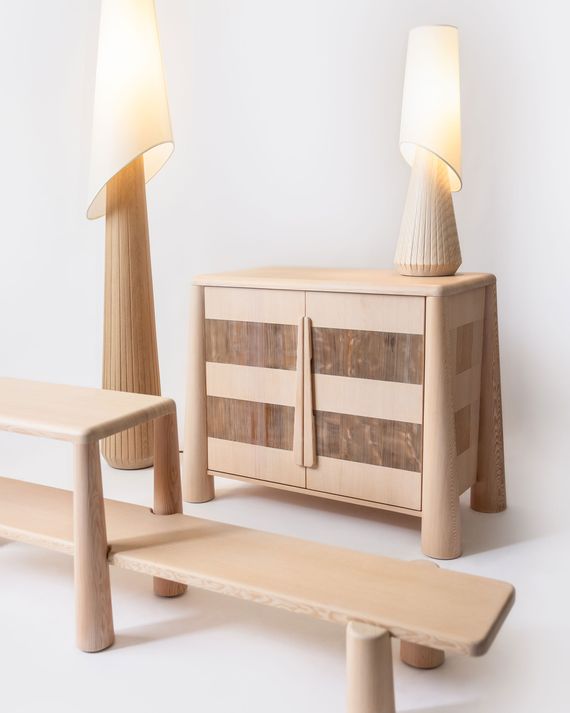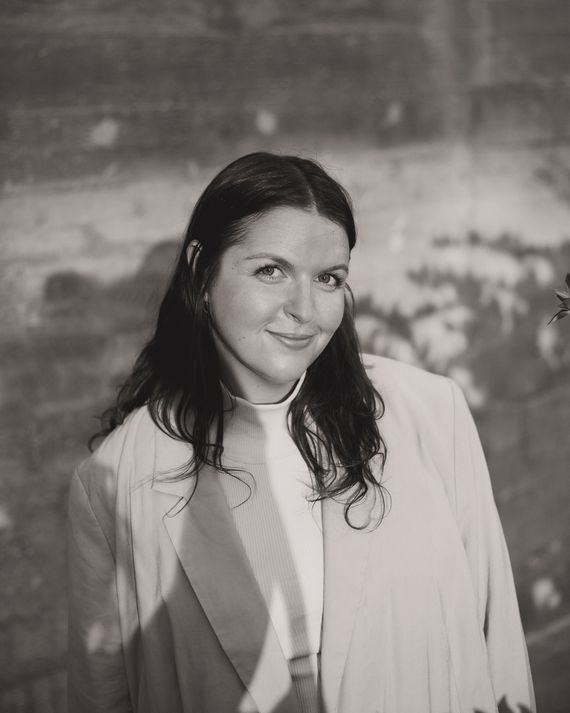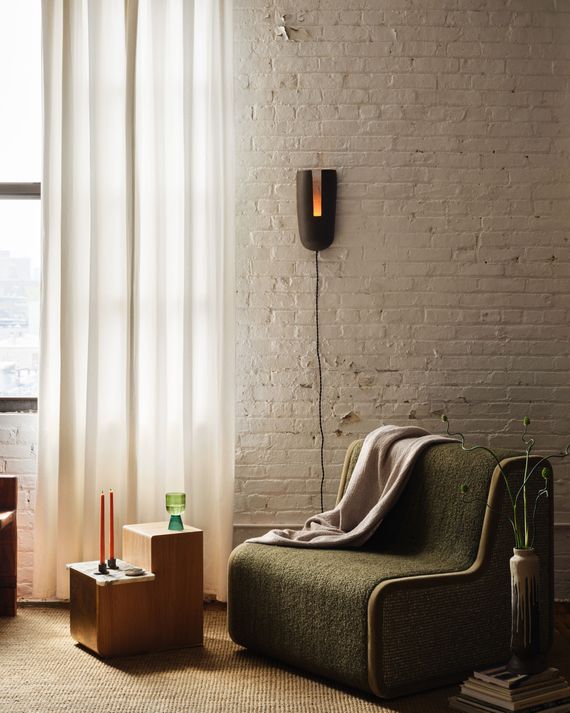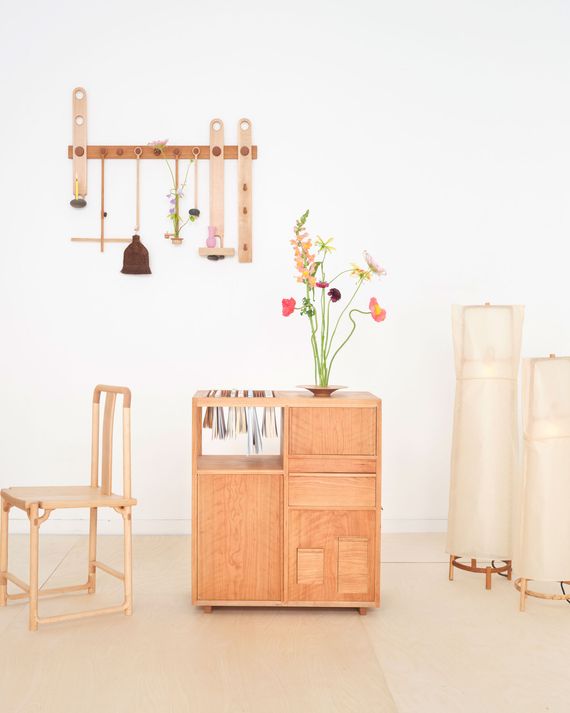Four New Furniture Collections From a Design Incubator
Photo-Illustration: Curbed; Photos: Colony Designers
The floor-to-ceiling storefront windows on West Broadway frame an airy gallery dotted with one-of-a-kind furniture and wall coverings, or what looks at first glance like standard design-gallery fare in Tribeca. But the first storefront space of Colony, the ten-year-old designers’ co-op, is also a testament to a space that does things a little differently. Founded by design curator Jean Lin, the co-op’s unique model charges a tightly curated roster of American designers a low fee for representation (under $1,000) and takes a small commission on sales.
The show on view now is a particularly ambitious labor of love. It’s just the second year that Lin and Colony’s art director, Madeleine Parsons, are presenting the collections of a new class of fellows from the Designers’ Residency program they launched last year. As curators who also teach at design schools like Parsons and Rhode Island School of Design, they have seen firsthand the challenges of establishing a successful furniture practice as they watched their students graduate and try to make it in the industry. Their residency is an eight-month incubator that gives fellows subsidized studio rent, shop access, and part-time employment at the gallery, where they will get more comfortable working with clients and other, more established designers. Following their inaugural exhibition, they will continue to be represented by Colony for at least two years. This year, the second class of fellows includes Alara Alkan, Steph Betesh, Maggie Pei, and Thomas Yang; some are new graduates of design schools while others have been working for nearly a decade in the design field. “Their ability to choose people that can fit in this community and add them to the family is not a small thing,” says Yang. “They’re taking a risk.” The applications for next year’s fellows are now open until the end of June.


For Alara Alkan, who has shown her work during Milan and Mexico and teaches at RISD, the residency was a chance to continue her experimentation with materials, especially the ways they change in sunlight. Perhaps the most striking piece in her Temporal Tides collection is the Maelen Cabinet, composed of panels striated by sandblasting Douglas fir to reveal the wood fibers that make up the grain. The cabinet and its “sister,” the Etagere, are grounded by tapered legs that widen toward the ground and then seem to hover just over the floor. The lamps in the collection also lighten the heaviness of their wide oak and ash bases with slanted lampshades in linen that look like they might float away.


Photo: David Mitchell/ …
Photo: David Mitchell/
Steph Betesh has worked for nine years as an interior designer in Austin, Texas, and New York. With the residency, she finally got the support to develop her own line of furniture and objects for Ember, the studio she launched in 2022. Her Entwine Series includes a dimmable ceramic sconce called Rift and customizable side tables ideal for hospitality projects. An oversize green chair called Trio is the standout, with customizable fabric options for the seat, the frame, and the sides. Its wide, dense form elegantly conceals a superb swivel mechanism that spins you around in place.
Clockwise from left: Photo: Courtesy ColonyPhoto: Courtesy Colony
From top: Photo: Courtesy ColonyPhoto: Courtesy Colony
A series of poetic black-and-white collages and abstract flame drawings were all that Maggie Pei provided at the start of her residency. Her mysterious process kept everyone on their toes until she revealed the form her collection took: a series of painstakingly crafted cabinets called the Wonder Chambers. Each house-shaped chamber — Theater of No Song, Labyrinth Garden, Pillow House, and Mountain Water — is based on its own object story. Upholstered in quilted fabric or covered in hand-drawn tiles, they hide secret details behind the doors, like miniature curtains and artwork on hinges and brackets. Nearby, the Apothecary Floor Lamp has a similarly haunted presence; a gridded tower in black-dyed oak with flamelike stoneware shapes holds nothing but candelabra bulbs in each compartment — the presence of drawers is just an illusion. A recent graduate of RISD, this is Pei’s first furniture collection.


In an ode to his family and heritage — he is Taiwanese and Northern Italian— Thomas Yang crafted a collection of objects titled Jia-Ciasa that center rituals. His Cabinet of Memories has the proportions of a Ming dynasty piece that he grew up with but is updated with custom doorknobs, hidden drawers for hiding valuables, and a slotted book display with removable wood splines that double as bookmarks. A series of three Tian Dan rice-paper lanterns that reference sky lanterns are so delicate that the shades move with you as you walk past, but the delicate cherrywood pieces also contain other custom details: concealed wiring inside the hand-cut frames, a custom porcelain socket, and a handsewn finish on the shade’s oval base. Also in the collection: A series of seven Shaker-inspired wall hooks hold “moments of celebration,” like a sterling-silver flower that conceals a small kenzan, a heavy needle base to arrange flower stems ikebana style. In 2023, Yang exhibited his work at WantedDesign as a graduating senior at Parsons, and this is his first furniture collection.
See All
Source link




